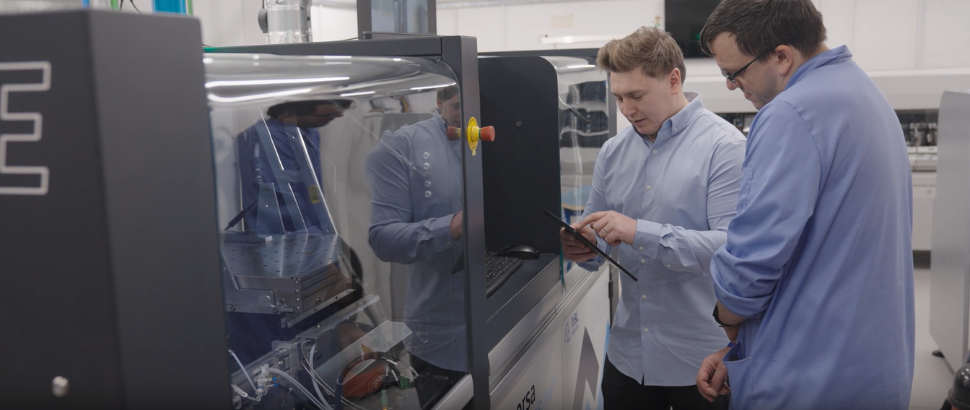News, Blogs & Articles
.png)
What’s the Biggest PCB Supply Chain Risk?
Case Study
July 21, 2025
Components. Not the PCB itself, not assembly delays, not shipping disruptions – components represent the single biggest supply chain risk for PCB projects. A single hard-to-source component can halt production, delay product launches, and force expensive redesigns. The best defence isn’t inventory management or supplier diversification – it’s making smarter component choices during the design stage.
Why Components Are Your Biggest Risk
Choose Components for Longevity
Established manufacturers: Select components from manufacturers with strong market positions and broad product portfolios. Companies like Texas Instruments, Analog Devices, and Infineon have better long-term stability than smaller, specialised manufacturers.
Mainstream packages: Standard packages like SOIC, QFN, and 0603 passives have better long-term availability than exotic or proprietary packages.
Current generation products: Avoid both bleeding-edge components (supply risk) and end-of-life products (obsolescence risk). Choose components that are 2-3 years into their product lifecycle.
Design for Multiple Sources
Second-source compatibility: When possible, choose components with pin-compatible alternatives from different manufacturers. This is particularly important for:
- Microcontrollers and processors
- Power management ICs
- Interface components
- Critical analog circuits
Standard interfaces: Use industry-standard interfaces (I2C, SPI, UART) rather than proprietary protocols to maximise component choice flexibility.
Modular designs: Design subsystems that can be easily modified if component changes are required, rather than tightly integrated designs that require complete redesigns.
Build in Design Flexibility
Footprint compatibility: Use PCB footprints that can accommodate multiple component options. For example, design pads that work with both SOIC-8 and MSOP-8 packages.
Alternative circuit topologies: Include provisions for alternative circuit implementations. For example, design space for both integrated and discrete power solutions.
Configurable designs: Use jumpers, 0-ohm resistors, or unpopulated component options to allow field configuration changes without PCB redesigns.
The Cost of Getting Component Selection Wrong
Production delays: Waiting for a single component can halt entire production runs, affecting delivery schedules and customer relationships.
Expensive alternatives: Last-minute component substitutions often cost 2-3x more than the original specification, destroying profit margins.
Redesign costs: Changing components late in the development cycle requires PCB respins, re-testing, and recertification – easily costing £10,000+ per iteration.
Opportunity costs: Delayed product launches mean lost market opportunities and competitive disadvantage.
Future-Proofing Your Component Selection
Choose Components for Longevity
Established manufacturers: Select components from manufacturers with strong market positions and broad product portfolios. Companies like Texas Instruments, Analog Devices, and Infineon have better long-term stability than smaller, specialised manufacturers.
Mainstream packages: Standard packages like SOIC, QFN, and 0603 passives have better long-term availability than exotic or proprietary packages.
Current generation products: Avoid both bleeding-edge components (supply risk) and end-of-life products (obsolescence risk). Choose components that are 2-3 years into their product lifecycle.
Design for Multiple Sources
Second-source compatibility: When possible, choose components with pin-compatible alternatives from different manufacturers. This is particularly important for:
- Microcontrollers and processors
- Power management ICs
- Interface components
- Critical analog circuits
Standard interfaces: Use industry-standard interfaces (I2C, SPI, UART) rather than proprietary protocols to maximise component choice flexibility.
Modular designs: Design subsystems that can be easily modified if component changes are required, rather than tightly integrated designs that require complete redesigns.
Build in Design Flexibility
Footprint compatibility: Use PCB footprints that can accommodate multiple component options. For example, design pads that work with both SOIC-8 and MSOP-8 packages.
Alternative circuit topologies: Include provisions for alternative circuit implementations. For example, design space for both integrated and discrete power solutions.
Configurable designs: Use jumpers, 0-ohm resistors, or unpopulated component options to allow field configuration changes without PCB redesigns.
Component Selection Best Practices
Research During Design
Check current availability: Don’t just verify that components exist – check actual stock levels and lead times during your design phase.
Verify lifecycle status: Confirm components are in full production, not approaching end-of-life or already obsolete.
Assess market position: Understand whether you’re designing with mainstream components or niche products that might have supply constraints.
Create Approved Vendor Lists (AVLs)
Primary and secondary sources: Identify 2-3 acceptable manufacturers for each critical component function.
Test alternatives early: Validate alternative components during prototyping, not when supply issues emerge.
Document equivalency: Create detailed specifications showing which components can be substituted and under what conditions.
Plan for Obsolescence
Lifecycle monitoring: Establish processes to track component lifecycle status and receive obsolescence notifications.
Planned refresh cycles: Design products with planned component updates every 3-5 years to stay ahead of obsolescence.
Obsolescence budgets: Include component change costs in your product lifecycle planning.
Early Warning Systems
Set up alerts: Configure distributor and manufacturer alerts for component availability, pricing changes, and lifecycle updates.
Regular reviews: Schedule quarterly component risk assessments to identify emerging issues before they become critical.
Supplier scorecards: Track supplier performance on delivery, quality, and communication to identify potential problems early.
The Design-Stage Advantage
The most effective component risk mitigation happens during design, not procurement. By the time you’re ordering components for production, your options are limited. During design, you can:
- Choose components with better supply chain profiles
- Design flexibility into your PCB layout
- Validate alternative components
- Plan for future component changes
This proactive approach costs virtually nothing during design but can save thousands in avoided delays and redesigns.
Making Smart Component Choices
Default to mainstream: When multiple components can meet your requirements, choose the most mainstream option with the best supply chain profile.
Avoid single points of failure: Never let one hard-to-source component hold up your entire product.
Plan for change: Design your PCB assuming you’ll need to change components at some point in the product lifecycle.
Test alternatives early: Validate backup components during prototyping when changes are cheap and easy.
The Bottom Line
Component supply chain risks are real, expensive, and growing. But they’re also largely preventable through smart design choices. By selecting components for supply chain stability and building flexibility into your designs, you can avoid the costly delays and redesigns that plague many PCB projects.
The key insight: component supply chain management starts with component selection, not procurement. Make supply chain considerations a core part of your design process, and you’ll avoid the majority of supply chain problems before they occur.
Need Help with Component Selection and Supply Chain Risk Management?
At ABL Circuits, we help customers navigate component selection challenges and build supply chain resilience into their PCB designs. Our team combines deep component market knowledge with practical design experience to help you make smart choices that protect your project timeline and budget.
From component risk assessments to alternative component validation, we can help you build robust supply chain strategies that keep your products in production.
Contact us today to discuss your component selection challenges and discover how our supply chain expertise can protect your next PCB project.
News, Blogs & Articles















